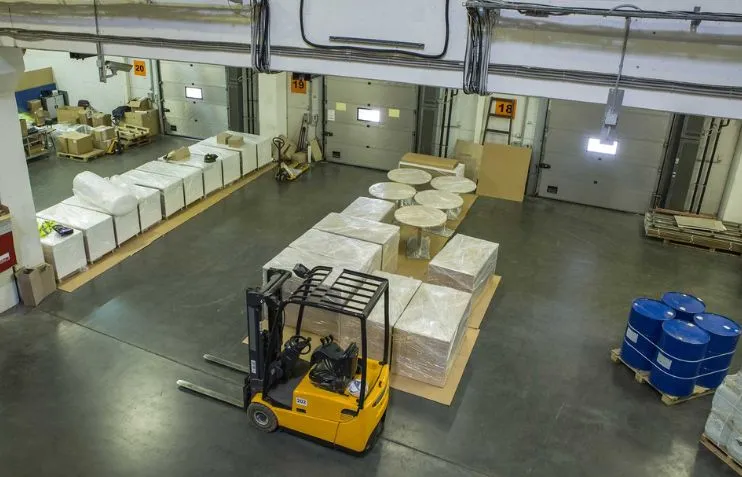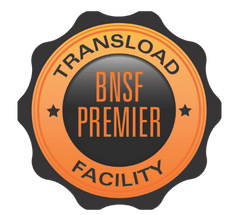Cross-docking is a logistics technique provided in Tacoma, Washington by Atlas Columbia Warehousing, where the products of our clients are unloaded from inbound trucks and directly transferred to outbound vehicles with minimal storage time. This process optimizes the flow of goods and reduces warehousing costs for our clients, playing an efficient role in supply chain management.
Cross-docking eliminates long-term storage, allowing companies to streamline operations, minimize risk of damage, and enhance customer satisfaction through faster delivery times. Let’s delve further into this logistics strategy.
What is Cross-Docking in a Warehouse?
Cross-docking focuses on minimizing storage time and moving products efficiently from one transportation mode to another, unlike traditional warehousing, where products are stored for long periods.
Cross-docking warehouses are equipped with multiple dock doors to allow for rapid offloading from inbound trucks and loading onto outbound vehicles. This layout reduces the need for warehousing space while ensuring that products are quickly sorted, consolidated, and shipped to their destination.
A facility like the Atlas Columbia Warehouse in Tacoma, Washington provides cross-docking services to our clients. Here, inbound products are received, sorted according to their destination, and immediately transferred to outbound trucks, cutting down storage time and enhancing supply chain efficiency.
What is the Process of Cross-Docking in a Warehouse?
The cross-docking process involves a few key steps, all aimed at moving products from suppliers to customers in the fastest way possible, with minimal storage or handling.
- Receiving inbound shipments: Products are delivered to the cross-docking terminal via trucks, where they are unloaded at the inbound dock. These incoming shipments typically consist of consolidated loads that need to be quickly sorted.
- Sorting and consolidation: After unloading, the products are sorted according to their final destinations. In a consolidation cross-docking scenario, smaller shipments are grouped into larger loads before being sent to the next step.
- Loading onto outbound trucks: Once sorted, the goods are loaded onto the appropriate outbound vehicles at the outbound dock. The goal is to minimize storage time and ensure that goods reach their destination quickly.
- Freight transport to the final destination: Freight transport shipping through outbound trucks brings the consolidated or sorted shipments to distribution centers, retail stores, or end customers.
Cross-Docking in a Warehouse Example
In a cross-docking warehouse, a truck loaded with consumer electronics arrives from a supplier. Instead of placing the products in storage, workers unload the electronics, sort them based on destination, and immediately load them onto multiple outbound trucks destined for retail stores across the region. This process reduces the storage costs typically associated with traditional warehousing while ensuring quicker deliveries.
Types of Cross-Docking
Cross-docking is not a one-size-fits-all solution. Both FTL LTL freight truck transport methods can be used and there are different types that businesses can implement depending on their needs:
- Pre-distribution cross-docking: In this method, products are sorted and packaged with pre-determined distribution instructions before arriving at the cross-docking facility.
- Post-distribution cross-docking: In this scenario, products are sorted at the cross-docking warehouse based on real-time data, such as current customer demand.
- Consolidation cross-docking: Smaller shipments from multiple suppliers are combined into larger loads before being shipped to their final destination.
- Deconsolidation cross-docking: Large shipments are broken down into smaller loads for easier distribution to multiple locations.
- Continuous cross-docking: This method involves the constant flow of products through the facility, with minimal handling or storage.
When Should Cross-Docking Be Used?
Cross-docking is especially useful in the following situations:
- Time-sensitive goods: Products like perishable items that require quick transportation benefit from reduced storage time.
- High-demand products: Goods with consistent demand, such as consumer electronics or seasonal items, can be quickly distributed through a cross-docking solution.
- Minimizing storage costs: By moving products rapidly from inbound trucks to outbound transportation, companies reduce the need for warehouse space and the associated costs.
Businesses involved in retail, pharmaceuticals, or the beverage industry can significantly benefit from cross-docking. Companies seeking a competitive advantage use cross-docking to reduce inventory costs and improve customer satisfaction through faster deliveries.
Cross-Docking in Tacoma, Washington State: Atlas Columbia Warehousing
At Atlas Columbia Warehouse, part of the Stryder Group, we specialize in cross-docking services, with a focus on bulk paper products. Located in Tacoma, Washington, our distribution center provides cross-docking services to streamline the movement of goods through our cross-dock facility, significantly reducing both transportation costs and warehousing costs for our clients.
At Atlas Columbia, we efficiently offload and sort inbound shipments of bulk paper products, ensuring minimal need for long-term storage. By limiting how often products are handled, we help reduce the risk of damage, particularly for fragile or high-volume paper goods. With our strategic location in Tacoma, our facility serves as a critical hub for distributing paper products across Washington State and beyond, enabling faster delivery times and enhancing supply chain efficiency.
We provide dedicated cross-docking solutions for the paper & pulp industry, giving businesses a competitive edge in logistics. Our efficient use of minimal storage space ensures that goods spend less time in the warehouse, helping companies lower costs and improve overall customer satisfaction.
As experts in managing the flow of bulk paper products, we understand that cross-docking can transform supply chains by reducing costs, speeding up delivery times, and minimizing the need for excess inventory. Whether it’s pre-distribution, consolidation, or continuous cross-docking, our services offer businesses the flexibility and efficiency they need to stay competitive. Cross-docking is the cornerstone of our supply chain management efforts, and we are proud to help businesses maintain a competitive edge, especially in the handling and distribution of bulk paper products.
Ready to efficiently manage your supply chain and reduce costs with cross-docking services at Atlas Columbia?
Contact us at 253-272-9320 for more information or to visit us at: 922 E 11th St, Ste 300, Tacoma, WA 98421, United States.





